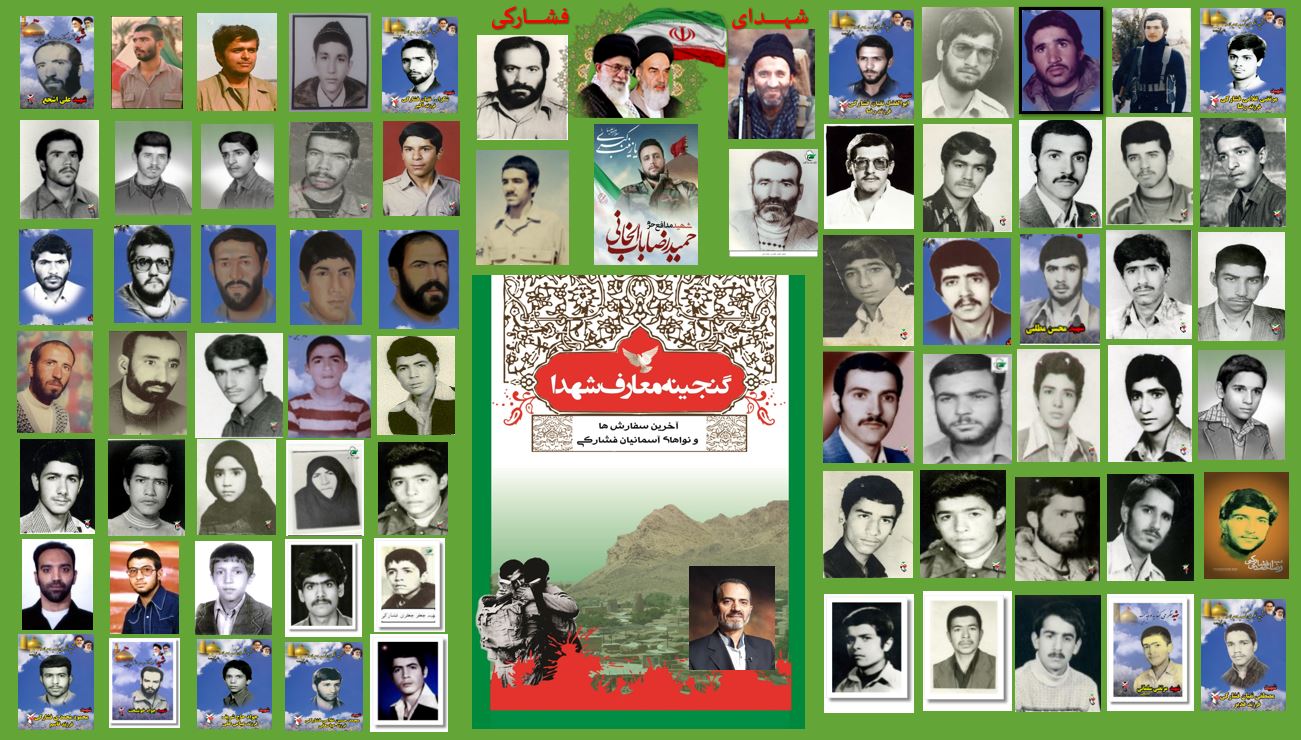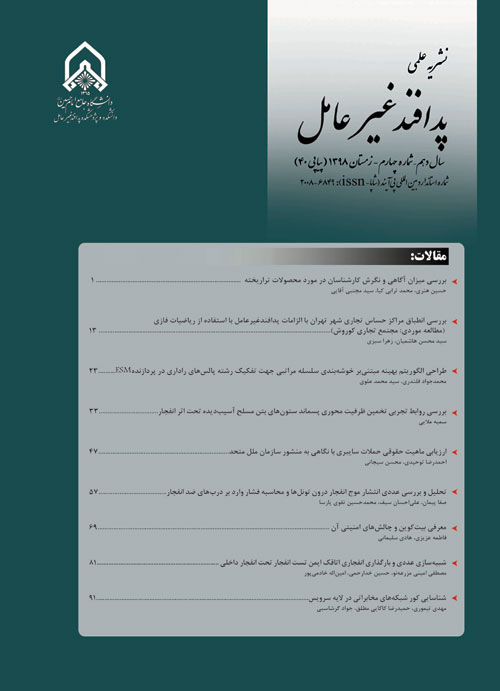مبانی طراحی معماری فضاهای زیرزمینی با ملاحظات دفاع غیرعامل
https://www.magiran.com/paper/1563170
مبانی طراحی معماری فضاهای زیرزمینی با ملاحظات دفاع غیرعامل
نویسنده:
سید احمد مهدی نیا ، سید جواد هاشمی فشارکی
چکیده:
رشد گسترده تمدن در مقیاس جهانی، اثر چشم گیری بر نحوه زندگی بشر خواهد داشت. درحالی که جمعیت کره زمین در حال افزایش است و جهان نیز می بایست غذا، انرژی و منابع معدنی بیش تری جهت حمایت از این رشد فزاینده فراهم نماید و استفاده از فضاهای زیرزمینی به اصلاح و بهبود این وضعیت کمک می نماید. فضاهای زیرزمینی نقش اساسی در حفاظت فیزیکی از سرمایه های ملی دارند لذا توجه جدی به رعایت ملاحظات دفاع غیرعامل در طراحی معماری این فضاها، علاوه بر رفع مشکلات عملکردی، باعث مصونیت بخشی آن ها شده و به عنوان یکی از مولفه های برتری قدرت و امنیت در زمان تهدید خواهند بود. در این تحقیق ابتدا فضاهای زیرزمینی بررسی و شناخت کلی از آن ارائه شد و سپس با ارائه الگوهای کاربردی در بخش هایی مانند: طراحی نمای بیرونی و ورودی ها، جانمایی و سازماندهی فضاها، طراحی داخلی، نظام نورپردازی و امنیت و ایمنی در شرایط مختلف، به مبانی طراحی معماری فضاهای زیرزمینی پرداخته شده است.
طراحی معماری هر فضای زیرزمینی با توجه به وضعیت حاکم بر آن مثل شیب داربودن سطح، محصوربودن سطح روی فضای زیرزمینی و تراکم بالای ساختمانی در سطح و...، و نیز نوع کارکرد آن مثل تجاری، ورزشی، نظامی و...، به طور خاص انجام می شود؛ که لحاظ کردن اهداف طراحی و نیز الگوهای ارائه شده کمک شایانی به بهره بردای بهتر آن می نمایاند و از نظر عملکردی نیز مشکلات کم تری گریبان گیر بهره برداران خواهد شد.
کلیدواژگان:
طراحی ، دفاع غیرعامل ، فضاهای زیرزمینی ، الگو
زبان:
فارسی
انتشار در:
فصلنامه پدافند غیرعامل، سال هفتم شماره ۲ (پیاپی ۲۶، تابستان ۱۳۹۵)
صفحه:
۲۹
principles of Designing Underground Spaces Based on Passive Defense Considerations
Author(s):
S. A. Mahdinia , S. J. Hashemi Fesharak
Abstract:
Increasingly developing of the human civilization throughout the world will effect on human life mode in future. The sphere population is increasing and the nations are searching for the best life standards, and the earth must supply more food, energy and mineral reservoirs to support the increasingly crowd. Underground spaces play a basis role in safe keeping the national assets and currently, it is considered as the most attractive and safest option to use. The advantages of such spaces are high security, low keeping costs, low energy-consuming, high degree of control and prevention from biological impacts. according to these characteristics, these spaces are more effective than other spaces. Therefore, using specially the passive defense approaches for many of these spaces can make them very safe and they will be the powerful and secure cases in dangerous and threatening conditions.In this study, at first the overall identification and assessment of underground spaces was represented and then it has addressed the principles of architecture design underground spaces with the presentation of applied patterns in some sectors such as, designing entrances and external view, Locating and organizing spaces, Interior design, Lighting system, safety and security in different condition. Architectural design of every underground space due to its situation like slope of the surface, the surface being trapped underground space and high density construction on the ground, and the type of operation, such as business, sports, military and ..., is done specifically; which considering design goals and the presented patterns help to better exploit it and it will be fewer problems faced by farmers from the functional point of view.
Keywords:
Design , Passive Defense , Underground Space , Pattern
Language:
Persian
Published:
Passive Defense Quarterly, Volume:7 Issue: 2, 2016
Page:
فصلنامه پدافند غیرعامل
Passive Defense Quarterly
فصلنامه فنی مهندسی
صاحب امتیاز:
دانشگاه جامع امام حسین
مدیر مسئول:
دکتر عبدالرحمن کشوری
سردبیر:
دکتر علی سعیدی


